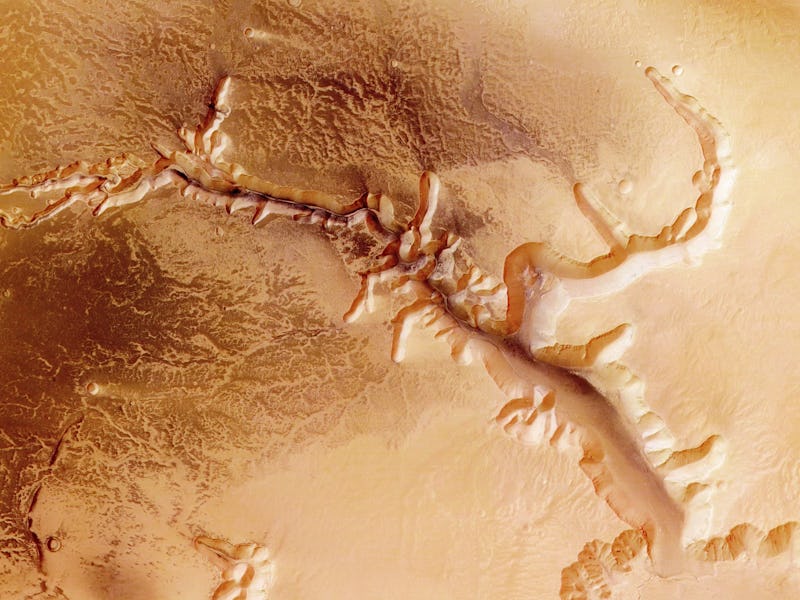‘Marsquakes’ Could Facilitate the Evolution of Life on Mars

Earthquakes are usually terrifying natural disasters that endanger thousands of lives — but on Mars, they could help give life to alien species.
A new study published in the journal Astrobiology finds that earthquakes produce rocks that are subsequently richer in trapped hydrogen. The results, taken a step further and applied to extraterrestrial worlds, suggest “marsquakes” could also encourage the type of hydrogen-rich geology necessary to support life.
You’re probably familiar with the idea of carbon as the building block for organic life. But in order for carbon to become anything more special than just carbon, it needs to bond with other elements, including hydrogen. We know that rocks formed by quake-induced grinding against other rocks end up supercharged with hydrogen, and that Mars has enough seismic activity to produce them. If there’s enough hydrogen around and conditions are right, Martian life could theoretically evolve.
Of course, the state of Mars’ hydrogen supply can’t be confirmed just yet. One of our most promising options for gathering more data about the planet’s surface is NASA’s Mars InSight mission, which has been delayed two years. Originally scheduled to kick off earlier this year and now slated for May 2018, InSight (short for Interior Exploration using Seismic Investigations, Geodesy and Heat Transport) remains NASA’s big-budget plan to physically place a lander on Mars to collect data illustrative of the planet’s interior. There have been a string of projects geared toward investigating Mars’s surface — InSight will be the first that attempts to literally go deeper, focusing on the core, mantle, and crust.
“Mars is not very seismically active, but our work shows that Marsquakes could produce enough hydrogen to support small populations of microorganisms, at least for short periods of time,” Yale geologist and first author Sean McMahon told YaleNews. “This is just one part of the emerging picture of the habitability of the Martian subsurface, where other sources of energy for life may also be available. The best way to find evidence of life on Mars may be to examine rocks and minerals that formed deep underground around faults and fractures, which were later brought to the surface by erosion.”